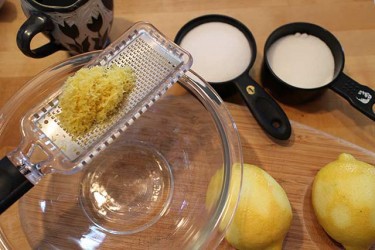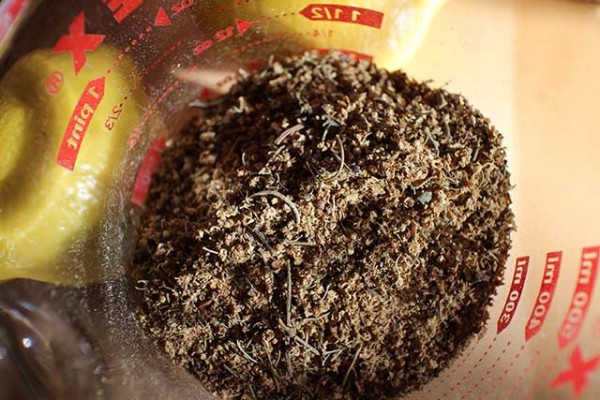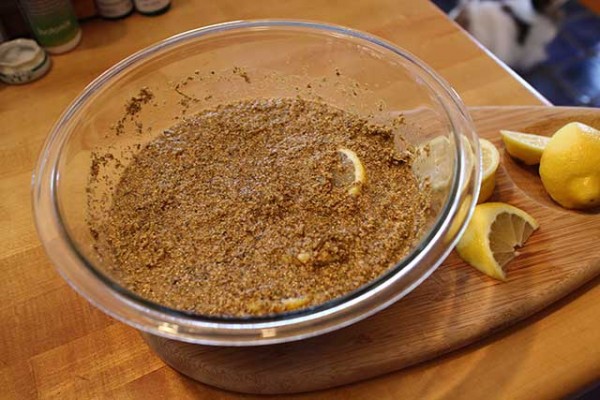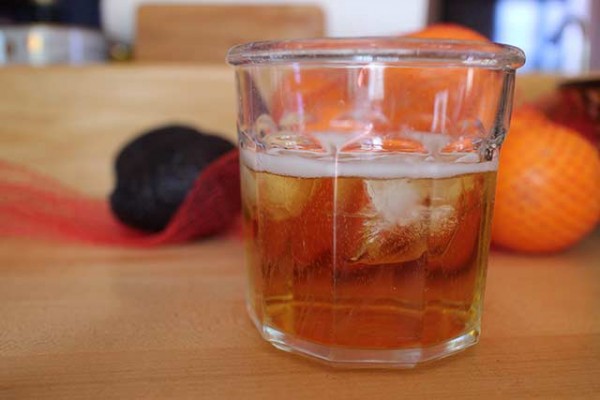My Attempt To Make Elderflower Cordial
My Attempt To Make Elderflower Cordial

A series about foods we miss and our quests to recreate them.
A few years ago, on a trip to Edinburgh, I had an elderflower drink that I keep thinking about. I don’t remember what it was specifically called on the menu — cordial, elderflower water, or some variant — just that it was so cool and refreshing that it seemed weirdly magical on that day. It was a late afternoon in November. My husband and I had been to this little graveyard in the old part of the city (martyrs, moss) and then stopped into a restaurant nearby. It was too early to be having dinner but that’s the nice part of being a tourist; it feels like being a ghost, you drop in when you want to and leave when you want to and no one speaks to you much. I mention this background because all of it — the greyness, the chill of standing outside reading plaques, the emptiness of the restaurant — are mixed up in my mind with how the cordial tasted. It came in a carafe with ice; it was clear; it was quenching like water, but slightly sweet and scented. I drank it all and would have ordered another but I’d done the exchange rate and it was ten dollars.
When I got home, I had some sort of enterprising Liz Lemon-y plan of mixing up a giant batch of cordial and giving bottles of it to friends for the holidays. Like these but homemade: “Here, taste happiness.” I got as far as bookmarking a recipe. (I hope everyone enjoyed the expired-but-still-completely-redeemable Bed Bath & Beyond coupons they got instead.) But after a winter of drizzling St. Germain into everything that passed by — wine, orange juice, coffee — it seemed like time to return to a nonalcoholic version of an elderflower drink. It’s very easy to make cordial, but I was curious whether it would turn out to have the same properties of the Edinburgh one — or instead taste like some sweet, agreeable, but largely generic soda.
There are many, many recipes for elderflower cordial online, mostly on British cooking sites, some made with dried elderflowers, others with fresh ones (recipes for the latter frequently include the instruction to be sure to shake off any insects from your flowers before you start). I used dried elderflowers, with this recipe as a guide (by the bye, if you want to booze up your cordial, that recipe advises adding in a couple shots of vodka and a squeeze of lime juice).
This makes a pretty small batch! But that seemed fine as an experiment.
Ingredients
• two lemons
• sugar
• 2 cups water
• 2 tsp. citric acid (they sell this at my local grocery store, but it seems like an ingredient you might potentially have to scout ahead)
• dried elderflowers (I ordered mine online, and used the entire 2 oz. package)

The elderflower package when opened smelled like… dust? Henna? Not like perfume.
The process itself is pretty easy. Boil the water and then add in the sugar (standard sugar water). Let this cool. Zest the lemons, slice them, throw them in a bowl with the dried elderflowers and a spoonful or so of citric acid (the original recipe called for the equivalent of 3 tsp., if I did the conversion right, but that seemed like too much when added, like Woody Allen had just sneezed a bunch of cocaine into the bowl, so I scooped some back out). Once the sugar water has cooled, pour it into the bowl. (With the addition of the sugar water the mixture smelled even more like henna, with the cut of the lemons drifting in.) Saran wrap the bowl and stick it in the fridge for two to three days to steep (I did three).

Strain. If you make these proportions there won’t be much, but the cordial gets diluted with water (you can use regular, sparkling, tonic, whatever).

Strained and poured into a jar, the cordial was a disappointing dark ginger-ale color. (I once had a mechanic hold up a valve with liquid inside it that was the exact same shade.) It was obviously, even from appearance, going to be different from the one I’d had, which was clear (at least in memory) and maybe proprietary, too, as other recipes I’ve seen online all had some citrus-y color to the finished products. (The elderflower cordial-knowledgeable out there may be able to explain.) It improved in looks once diluted — I landed at a rough 1:3 blend. It did not, at least, taste like henna. It was sweet, fizzy — not surprisingly, very much like drinking St. Germain… with ice cubes. More sunny than the drink I remembered. All in all: Perfectly pleasant, would do business again (most likely in summer), but not something I would bottle up and offer a friend as some lost Narnia White Witch drink.
Previously in series: My Ambitious Attempt To Make Puerto Rican Pasteles
